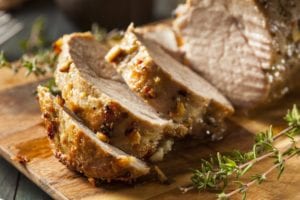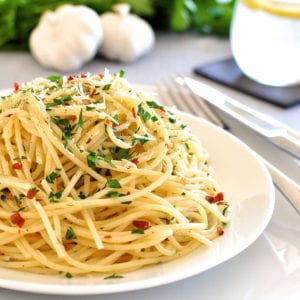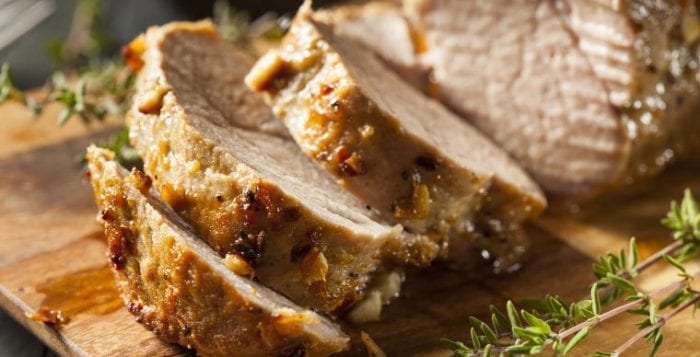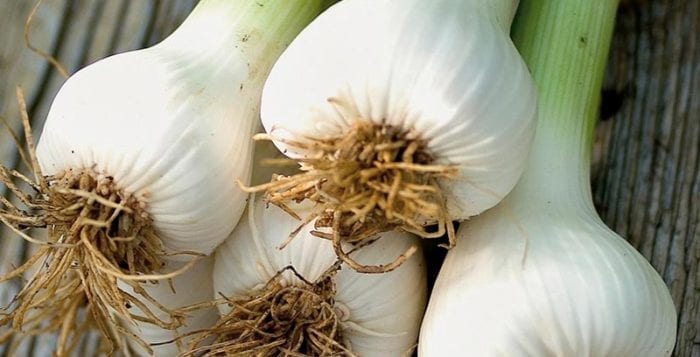By Barbara Beltrami
Garlic. Is there anyone who doesn’t love it? It has long been known to keep vampires away, and some say that it also, like the apple, keeps the doctor away. In fact, wise women and men have been touting its health-preserving properties for ages.
To name but a few of the myriad ancient civilizations that put their faith in its medicinal and culinary benefits, as far back as 1550 B.C. the Egyptians were prescribing no less than 22 garlic-based remedies for physical ailments. Good old Hippocrates swore by its use as a digestive aid, and my nana claimed, as did yours I bet, that it warded off cramps, colds and hiccups. And it certainly wards off other people, particularly if you breathe in their faces after you’ve eaten it.
As well as its medical virtues, garlic has a spate of gastronomic ones. If cooked properly and not allowed to burn or if used only in its freshest form, garlic can be intense and sublime. It makes a pork roast regal when combined with rosemary; a simple pasta sauce that uses an olive oil base splendid; and is a terrific compliment to vegetables, meat, poultry and shellfish. For the ultimate garlic experience, try cream of garlic soup.
Roast Pork with Garlic and Rosemary

YIELD: Makes 4 to 6 servings
INGREDIENTS:
8 to 10 garlic cloves
2 sprigs fresh rosemary, defoliated
2 tablespoons olive oil
Salt and freshly ground black pepper, to taste
One 3- to 4-pound pork loin roast, bones in (allow at least one bone per person)
DIRECTIONS:
Place garlic, rosemary leaves, olive oil, salt and pepper in bowl of food processor and pulse to create a coarse paste. Place pork in roasting pan; rub the paste on all surfaces. Cover loosely with aluminum foil and let sit for 30 minutes. Preheat oven to 375 F. Roast pork uncovered for approximately 30 minutes per pound or until a meat thermometer reads 170 to 185 degrees. Remove from oven and let sit for 15 to 20 minutes. Carve between the bones to create individual pork chops. Place on serving platter; reheat pan juices and pour over chops. Serve with roasted potatoes and a hearty green veggie.
Spaghetti with Garlic and Olive Oil

YIELD: Makes 4 to 6 servings
INGREDIENTS:
10 garlic cloves
¼ cup extra virgin olive oil
1 cup finely chopped fresh Italian parsley
1 teaspoon anchovy paste
½ teaspoon dried hot pepper flakes
¾ cup freshly grated Parmesan cheese
1 pound good quality spaghetti
DIRECTIONS:
Mince half the garlic and coarsely chop the other half. Place all in a medium skillet with the oil, parsley, anchovy paste and pepper flakes and heat, stirring constantly, until the garlic sizzles but has not begun to brown. Remove from heat and set aside. In a large pot cook spaghetti according to package directions until it is tender but firm to the bite (al dente). Drain, place in a large bowl and toss with the garlic and oil mixture. Pass grated cheese separately. Serve immediately with a crunchy mixed green or tomato salad or sautéed broccoli rabe or escarole.
Cream of Garlic Soup

YIELD: Makes 4 to 6 servings
INGREDIENTS:
4 tablespoons unsalted butter
2 onions, coarsely chopped
4 garlic bulbs, peeled and mashed
1 quart chicken broth or stock
½ pound stale French or Italian bread, sliced
1 bay leaf
2 sprigs fresh thyme, defoliated
6 ounces cream
Salt and pepper, to taste
DIRECTIONS:
In a large saucepan melt butter; add onion and garlic and sauté over medium heat for about five minutes, until onion becomes transparent but garlic doesn’t brown. Stir in bread slices, bay leaf and thyme leaves. Add broth, stir and simmer 20 minutes; remove bay leaf and discard. Remove mixture from heat and let cool for 10 minutes. Place in small batches in food processor and puree until smooth. Return to pot. Add cream and stir but do not allow to boil. Add salt and pepper to taste. Serve hot in winter or cold in summer with crusty bread, cheese and a kale or spinach salad.
Note: This article is adapted from one written by the author for this publication in 1990.







